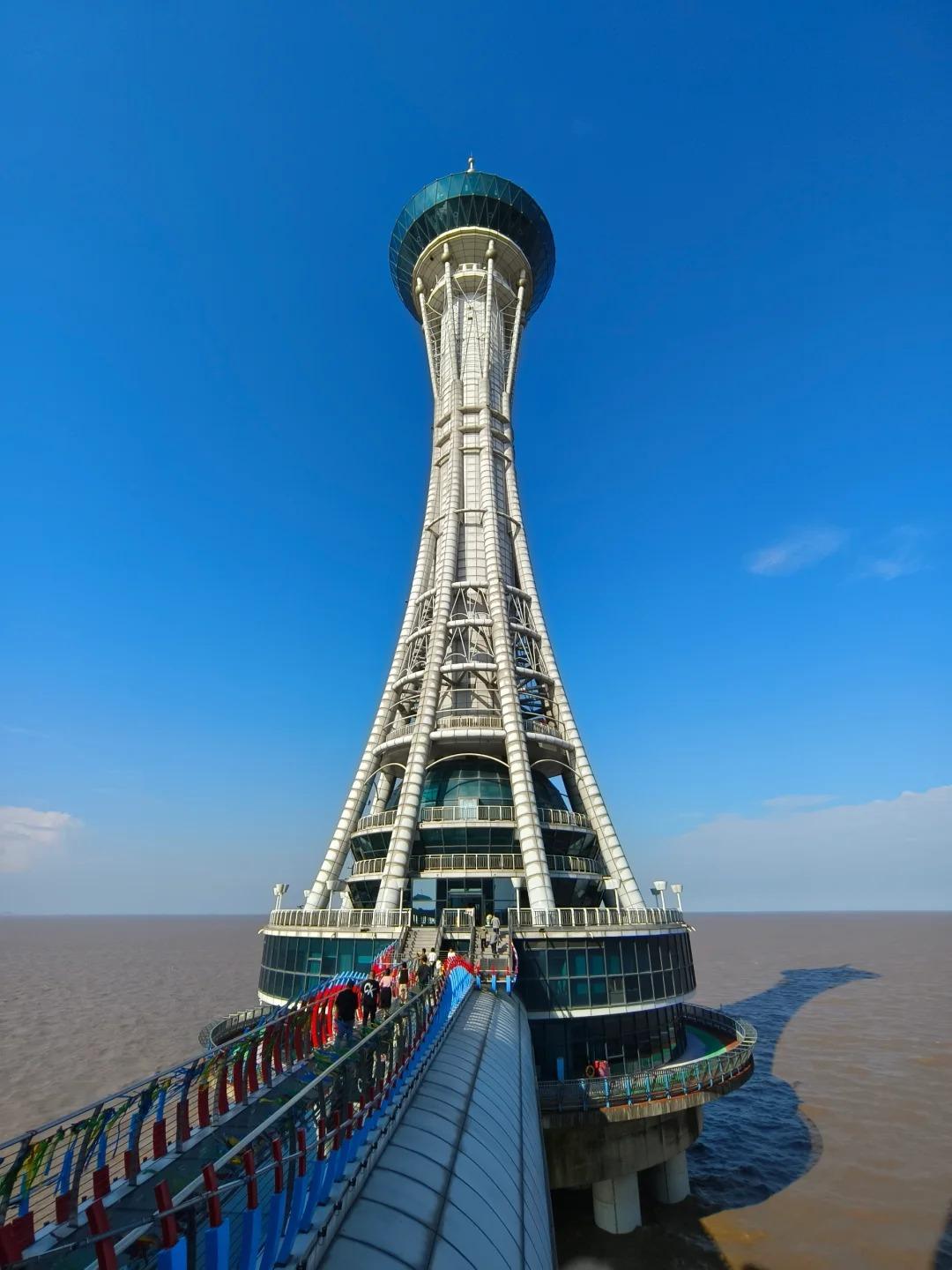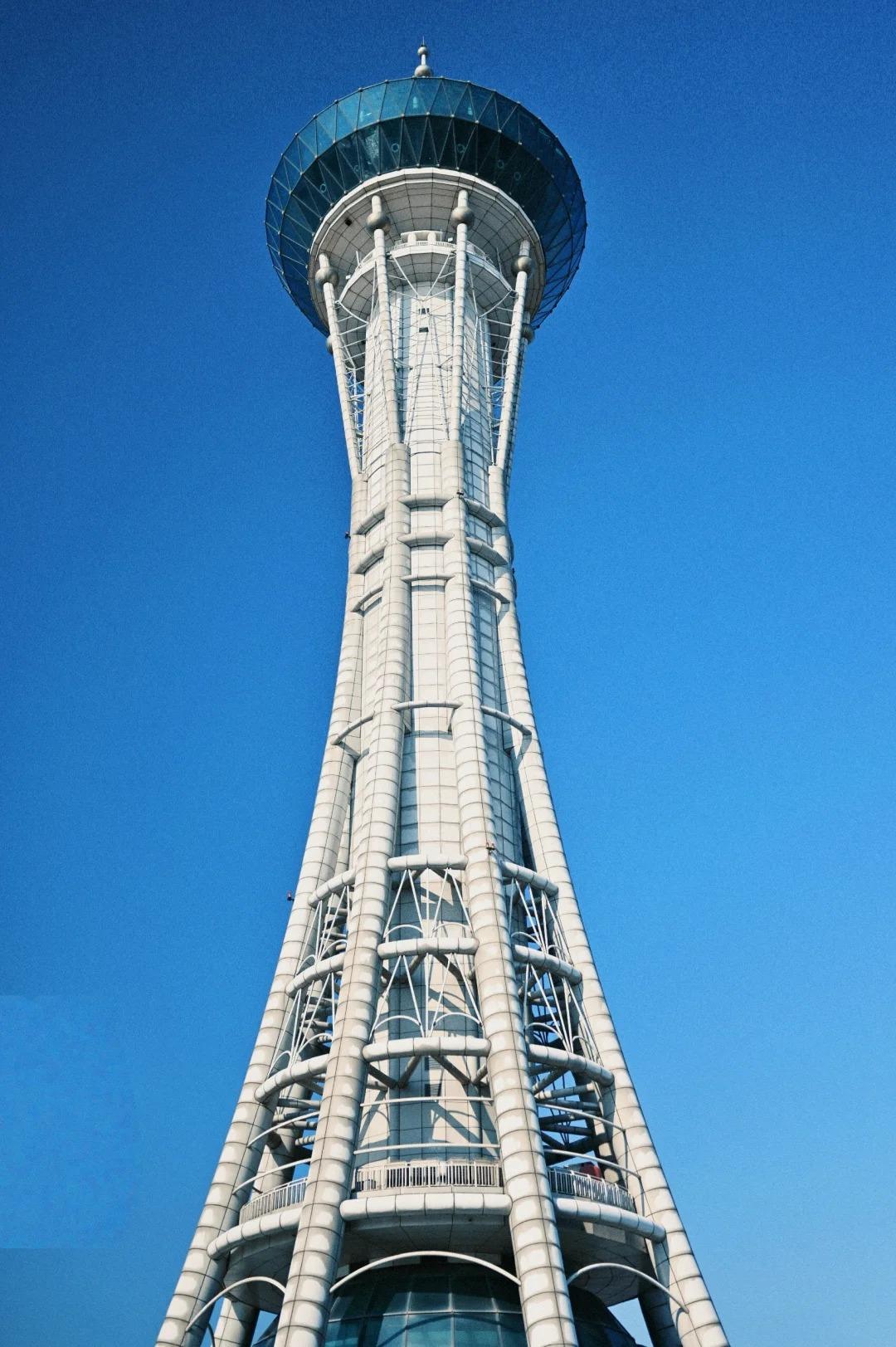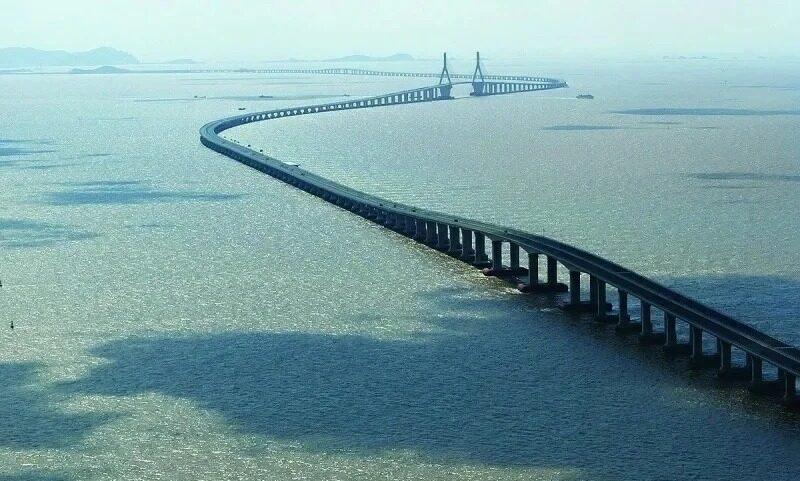Visiting Information
| Information | Details |
|---|---|
| Chinese Name | 杭州湾大桥 (Hángzhōu Wān Dàqiáo) |
| Location and Address | Spans Hangzhou Bay, connecting Jiaxing and Ningbo, Zhejiang Province, China |
| Opening Hours | Open 24 hours for traffic |
| Entrance Fee | Toll fee varies based on vehicle type (approximately 80 CNY for passenger cars) |
| How to Get There | By Car: Access via G15 Shenyang–Haikou Expressway By Bus: Long-distance buses from Hangzhou, Shanghai, or Ningbo By Taxi: Available from nearby cities, but can be expensive |
| Best Time for Visit | Spring (April to May) and Autumn (September to October) for pleasant weather and clear visibility |
| Contact Info | Phone: +86 574 6368 6368 (Ningbo Traffic Management Bureau) |
Overview
The Hangzhou Bay Bridge is a highway bridge spanning Hangzhou Bay in eastern China. It connects the municipalities of Jiaxing and Ningbo in Zhejiang province, significantly reducing the travel time between Shanghai and Ningbo. As one of the longest trans-oceanic bridges in the world, it stands as a testament to China’s engineering prowess and economic development.
Historical Background
Construction of the Hangzhou Bay Bridge began in June 2003 and was completed in June 2007. The bridge officially opened to public traffic on May 1, 2008. It was designed to alleviate traffic congestion in the booming Yangtze River Delta region and promote economic integration between Shanghai and Ningbo. The project faced numerous challenges due to the bay’s strong tides, frequent typhoons, and soft soil conditions.

Architectural Features
- Length: The Hangzhou Bay Bridge stretches for 35.673 kilometers (22.165 miles), making it one of the longest trans-oceanic bridges in the world. This impressive span allows it to connect two points across the wide Hangzhou Bay effectively.
- Design: The bridge employs a cable-stayed design for its main navigational channel. This section features two towers and three spans, with the central span measuring 448 meters (1,470 feet). The cable-stayed design allows for greater stability and strength, crucial in the challenging environment of Hangzhou Bay.
- Service Center: A unique feature of the bridge is its service center, located at the bridge’s midpoint. This artificial island houses restaurants, gas stations, hotels, and even a viewing tower, providing travelers with a place to rest and enjoy panoramic views of the bay.
- Environmental Considerations: The bridge’s design incorporates various environmental protection measures. These include systems to prevent oil leakage into the bay and the use of materials resistant to the corrosive effects of saltwater, ensuring the bridge’s longevity and minimal environmental impact.
Cultural Importance
The Hangzhou Bay Bridge holds significant cultural importance as a symbol of China’s rapid economic development and technological advancement. It represents the country’s ability to overcome geographical challenges through engineering prowess. The bridge has become a source of national pride and a landmark that showcases China’s modernization to the world. Furthermore, it has played a crucial role in connecting different regions and cultures within the Yangtze River Delta, fostering greater economic and cultural exchange.
Surrounding Attractions
- Hangzhou Bay Wetland Park: Located near the northern end of the bridge, this park offers a glimpse into the unique ecosystem of Hangzhou Bay. Visitors can enjoy boardwalks through reed marshes, observe migratory birds, and learn about wetland conservation efforts.
- Ningbo Youngor Zoo: Situated in Ningbo, not far from the southern end of the bridge, this modern zoo houses a wide variety of animals and is known for its conservation efforts. It’s a popular destination for families and wildlife enthusiasts.
- Dongqian Lake: This freshwater lake near Ningbo is renowned for its scenic beauty. Visitors can enjoy boat rides, explore ancient temples along the shore, and sample local cuisine in lakeside restaurants.
- Tianyi Pavilion: Located in Ningbo, this is China’s oldest existing private library. It houses a vast collection of ancient books and documents, offering insight into Chinese literary history and traditional architecture.

Photography Opportunities
- Bridge Panorama: The service center’s viewing tower offers panoramic views of the entire bridge structure and Hangzhou Bay. This vantage point is ideal for capturing the scale and grandeur of the bridge against the backdrop of the sea.
- Sunset Shots: During sunset, the bridge is bathed in golden light, creating stunning photo opportunities. The interplay of light, water, and the bridge’s silhouette can result in breathtaking images.
- Night Photography: At night, the bridge is illuminated, offering a different perspective for photographers. The lights reflecting off the water and the stream of car headlights create dynamic long-exposure opportunities.
- Aerial Photography: For those with access to drones (subject to local regulations), aerial photography can capture the bridge’s impressive scale and its context within Hangzhou Bay.
Modern Importance
- Economic Impact: The Hangzhou Bay Bridge has significantly reduced travel time between major economic centers like Shanghai and Ningbo, fostering regional economic integration and development. It has facilitated easier movement of goods and people, boosting trade and tourism in the Yangtze River Delta region.
- Technological Achievement: As one of the world’s longest trans-oceanic bridges, it represents a major technological achievement in bridge engineering. The bridge’s construction required innovative solutions to overcome challenges posed by the bay’s environment, advancing China’s capabilities in large-scale infrastructure projects.
- Environmental Considerations: The bridge’s design and construction incorporated various environmental protection measures, setting new standards for sustainable infrastructure development in sensitive marine environments.
- Tourism Boost: Beyond its practical transportation function, the bridge has become a tourist attraction in its own right. The service center, with its viewing tower and amenities, attracts visitors interested in experiencing this engineering marvel firsthand.

FAQ
- What is Hangzhou Bay Bridge famous for?
Hangzhou Bay Bridge is famous for being one of the longest trans-oceanic bridges in the world, its unique S-shape design, and the service center located at its midpoint. - What’s inside Hangzhou Bay Bridge?
Inside Hangzhou Bay Bridge, there’s a service center at its midpoint featuring restaurants, gas stations, hotels, and a viewing tower offering panoramic views of the bay. - Is Hangzhou Bay Bridge free?
No, Hangzhou Bay Bridge is not free. There’s a toll fee for vehicles crossing the bridge, which varies based on the type of vehicle. - Is Hangzhou Bay Bridge worth visiting?
Yes, Hangzhou Bay Bridge is worth visiting for its impressive engineering, panoramic views of Hangzhou Bay, and the unique experience of crossing one of the world’s longest trans-oceanic bridges. - What to do in Hangzhou Bay Bridge?
At Hangzhou Bay Bridge, you can visit the service center, enjoy panoramic views from the viewing tower, dine at restaurants, and experience crossing the impressive span. - How do I get to Hangzhou Bay Bridge in the local city?
From Hangzhou, Ningbo, or Shanghai, you can reach Hangzhou Bay Bridge by car via the G15 Shenyang–Haikou Expressway. Long-distance buses are also available from these cities to the bridge. - How to visit Hangzhou Bay Bridge?
To visit Hangzhou Bay Bridge, you can drive across it or take a long-distance bus. For the best experience, stop at the service center midway to enjoy the views and amenities. It’s advisable to check traffic conditions before your visit, especially during peak travel times.




